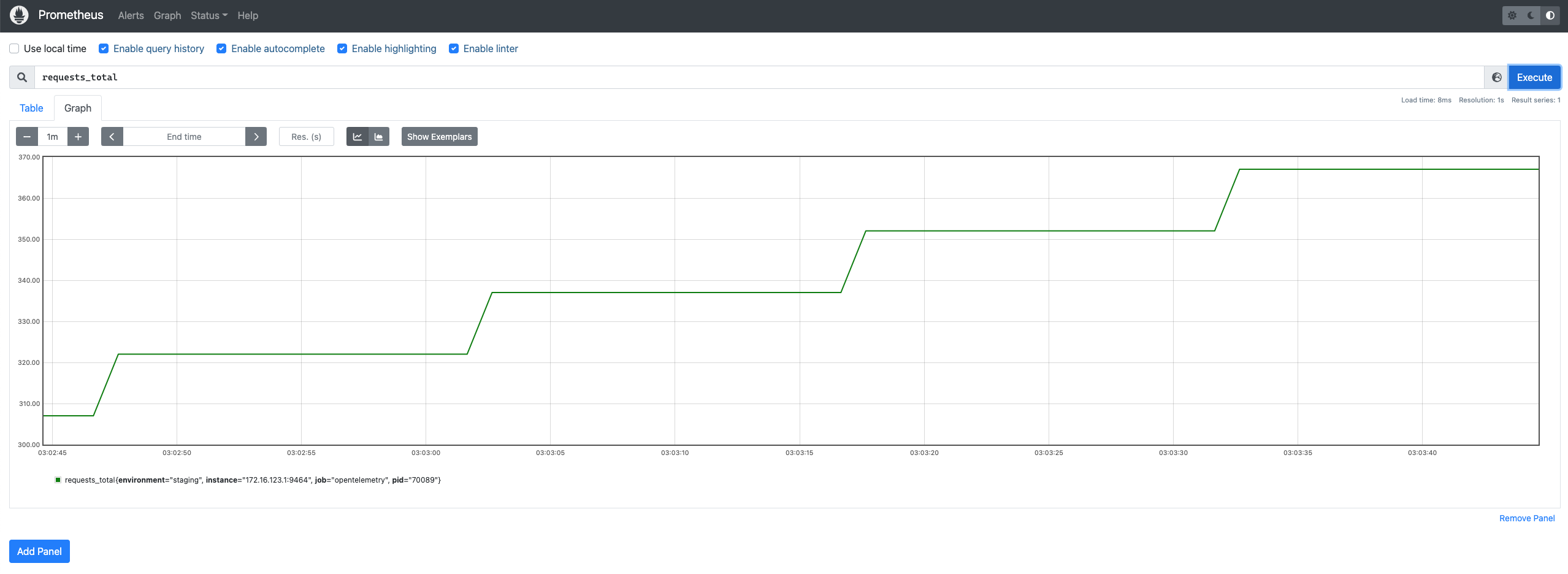|
|
||
|---|---|---|
| .. | ||
| docker | ||
| images | ||
| README.md | ||
| metrics.js | ||
| package.json | ||
| tracing.js | ||
README.md
Overview
This example shows how to use @opentelemetry/exporter-trace-otlp-http and @opentelemetry/exporter-metrics-otlp-http to instrument a simple Node.js application.
Installation
# from this directory
npm install
Run the Application
-
Run docker
# from this directory npm run docker:start -
Run tracing app
# from this directory npm run start:tracing -
Run metrics app
# from this directory npm run start:metrics -
Open page at http://localhost:9411/zipkin/ - you should be able to see the spans in zipkin

Prometheus UI
The prometheus client will be available at http://localhost:9090.
Note: It may take some time for the application metrics to appear on the Prometheus dashboard.


Useful links
- For more information on OpenTelemetry, visit: https://opentelemetry.io/
- For more information on tracing, visit: https://github.com/open-telemetry/opentelemetry-js/tree/main/packages/opentelemetry-sdk-trace-base
LICENSE
Apache License 2.0